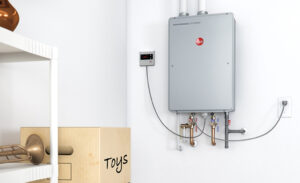When it comes to the overall health of your roof, gutters are often the unsung heroes. While much attention is paid to the shingles, flashing, and underlayment, gutters play a critical role in ensuring that water is diverted away from your home and roofing system. A well-maintained gutter system helps preserve the integrity of your roof, siding, foundation, and landscaping. However, many homeowners overlook the importance of proper gutter care. In this article, we’ll explore the top 10 gutter tips that will enhance your roofing system, preventing costly repairs, and prolonging the life of your home’s roof and foundation.
1. Ensure Proper Gutter Sizing
One of the most essential considerations when installing or replacing gutters is selecting the right size. Gutters that are too small for your roofline will struggle to handle the volume of water during heavy rain, leading to overflow and water damage. Conversely, overly large gutters may be more expensive than necessary and require more maintenance.
The key is to match the gutter size to your roof’s drainage needs. As a rule of thumb, for a standard residential roof, 5-inch gutters are usually sufficient, but for larger homes with steep or expansive roofs, you might need 6-inch gutters or even larger. Consulting a professional roofer can help you determine the appropriate gutter size for your specific needs.
2. Choose Durable Materials
Gutters come in a variety of materials, each with distinct advantages and disadvantages. Selecting a high-quality material is essential for ensuring the durability and longevity of your gutter system.
-
Aluminum: This is the most common material for residential gutters due to its durability, light weight, and resistance to rust. Aluminum gutters are also relatively low-maintenance and come in a variety of colors to match your home’s aesthetic.
-
Copper: Known for its aesthetic appeal, copper gutters offer a beautiful patina over time. While they are more expensive, they are also incredibly durable and resistant to corrosion.
-
Vinyl: Vinyl gutters are affordable, easy to install, and resistant to rust and corrosion. However, they can become brittle in cold weather and are less durable than aluminum or copper.
-
Steel: Galvanized steel gutters are known for their strength but can be prone to rust if not properly maintained. Stainless steel is an excellent option for its rust resistance and long-term durability.
Choosing the right material for your local climate and your budget can make a significant difference in the long-term performance of your gutter system.
3. Maintain Regular Gutter Cleaning
Clogged gutters are one of the most common causes of water damage to your roof and foundation. Debris such as leaves, twigs, and dirt can accumulate in gutters over time, obstructing the flow of water and causing it to overflow. Overflowing gutters can lead to leaks in the roof, mold in the attic, and erosion around the foundation.
Cleaning your gutters at least twice a year—once in the spring and once in the fall—is vital to preventing these issues. If you live in an area with many trees or experience frequent storms, more frequent cleaning may be necessary. It’s important to inspect gutters after severe weather events as well.
4. Install Gutter Guards
If you want to minimize the frequency of gutter cleaning and reduce the risk of clogging, gutter guards are an excellent investment. Gutter guards are mesh or screens that cover the gutters, allowing water to flow through while blocking larger debris such as leaves, sticks, and dirt. This keeps your gutters free-flowing and minimizes the need for regular cleaning.
There are several types of gutter guards available, from basic mesh covers to more advanced, self-cleaning options. While gutter guards won’t eliminate cleaning altogether, they significantly reduce the amount of debris that enters your gutters, making the maintenance process much easier.
5. Ensure Proper Gutter Pitch
Gutters are designed to allow water to flow freely toward the downspouts, but if they are not installed with the correct pitch, water can pool in the gutters, leading to damage and overflow. The standard slope is about 1/4 inch for every 10 feet of gutter.
Improperly pitched gutters can lead to standing water, which may freeze in colder climates, creating ice dams that damage the roofing system. Additionally, pooled water can lead to rusting and degradation of the gutter material. Hiring a professional installer ensures that your gutters have the correct pitch for efficient water drainage.
6. Inspect Downspouts and Extensions
While gutters are important for catching rainwater, the downspouts and extensions play an equally vital role in carrying the water away from your home. Downspouts that are clogged or improperly positioned can direct water toward your foundation, causing potential damage.
Make sure your downspouts are clear of debris, and check that water flows freely through them. Adding downspout extensions can help redirect water further away from the foundation, preventing pooling around the base of your home and reducing the risk of foundation damage. Ensure that the extensions are directed toward a sloped area or a storm drain, away from your home’s foundation.
7. Monitor for Signs of Gutter Damage
Even with proper maintenance, gutters can become damaged over time. It’s important to regularly check for signs of damage, such as rust spots, cracks, or sagging sections. Sagging gutters indicate that the fasteners or brackets may need to be tightened or replaced, while cracks or holes can allow water to leak through, causing water damage to the roof and walls.
If you notice any of these issues, it’s crucial to repair or replace the affected sections of your gutter system as soon as possible. Addressing damage early will help prevent larger, more costly repairs in the future.
8. Install Gutter Flashing
Gutter flashing is a metal strip that is installed under the shingles and along the edges of your roof to direct water into the gutters. Flashing helps prevent water from leaking into the roof deck and behind the gutters, where it could lead to wood rot and mold growth.
Installing gutter flashing is an extra layer of protection that ensures water is directed into the gutters and not allowed to seep under the roof’s edge. This is especially important in areas where wind-driven rain can cause water to pool behind the gutters.
9. Ensure Proper Gutter Fastening
As gutters age, the fasteners that hold them in place can become loose or rusted. This can lead to sagging gutters, which may not drain properly, or gutters that fall off entirely during a storm. Regularly check that all gutter fasteners are secure, and replace any that are loose or damaged.
In some cases, it may be necessary to replace old fasteners with more durable options, such as stainless steel screws or hidden brackets that provide a more secure hold. Well-fastened gutters are essential for maintaining proper water flow and ensuring that your roof and home are protected.
10. Consider Professional Gutter Installation
While DIY gutter installation is possible, it’s often better to rely on professionals for optimal results. A roofing contractor with experience in gutter installation can ensure that the system is correctly sized, pitched, and secured to your home. Professional installers also have access to high-quality materials and can recommend the best options based on your climate and the specifics of your home.
Additionally, they can advise on whether gutter guards, extensions, or other enhancements will benefit your particular situation, providing you with a gutter system that maximizes efficiency and longevity.
Conclusion
Gutters are an integral part of your roofing system, providing essential protection against water damage that can affect your roof, siding, foundation, and landscaping. By following these top 10 gutter tips, you can ensure that your gutters remain functional and efficient, preventing common issues like clogs, leaks, and sagging. Regular maintenance, proper installation, and the use of high-quality materials will not only extend the life of your gutters but will also contribute to the overall health of your home’s roofing system. By investing time and effort into your gutters, you’re safeguarding your home from costly water damage and enhancing its long-term durability.















